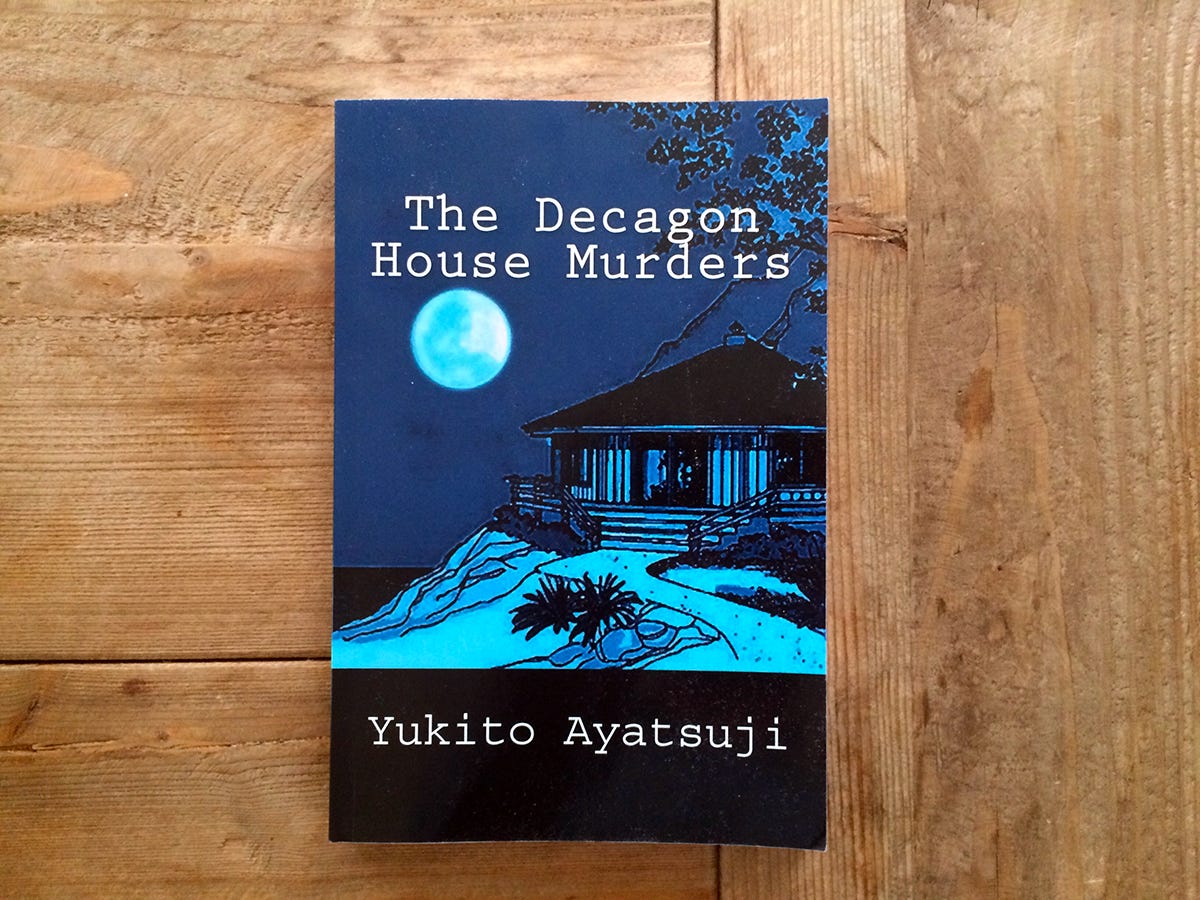The New Orthodox Mystery Edition
On detective fiction, "cold" storytelling, and the genre of shin honkaku
Robin Sloan (RS) is an author, olive oil maker, and internet tinkerer. He recently wrote about Spotify Weirdness and we’re exciting to have him back again this week. - Noah (NRB)
Robin here. I missed Scott Stedman's Murder Mystery Edition the first time it was circulated, so I was glad to read it on Thursday. I enjoyed Scott's taxonomy of forms at the newsletter's conclusion, but it was missing one—the one that I happen to know well.
I only learned about the rules of classic detective fiction in a roundabout way: through my appreciation of the Japanese genre called shin honkaku, or "new orthodox."
It's a genre that's both new and old: "new" because it's separated from the origins of detective fiction by a century; "old" because its flourishing is now decades in the past. Pillars of the genre like The Decagon House Murders and The 8 Mansion Murders were published in 1987 and 1989, respectively. For me, this timing lends the work an appealing atemporality.
Of course, it helps that they are utterly abstract. This is the nature of shin honkaku, whose writers began with the rules of orthodox detective fiction (enumerated in Scott's edition) and pushed them to their utter extremes.
The Decagon House Murders by Yukito Ayatsuji is a representative example. In the book's introduction, Japanese mystery writer Shimada Shoji writes:
As a result, [Ayatsuji’s] characters act almost like robots, their thoughts depicted only minimally through repetitive phrases. The narration shows no interest in sophisticated writing or a sense of art and is focused solely on telling the story. To readers who were used to American and British detective fiction, The Decagon House Murders was a shock. It was as if they were looking at the raw building plans of a novel.
If that doesn't exactly sound like a ringing endorsement: you haven't read any shin honkaku yet.
Why is this interesting?
All I can report is that I have been entranced by this genre. I generally believe modern fiction—including its televisual variants—has become too uniformly "psychoanalytic." While there's a place for great interior stories, not EVERY novel and TV show ought to anchor its action in psychology; in personal history; in "character." But it has become almost obligatory. The skeleton key that unlocks a modern story is never found in a vault or an envelope; rather, it is always waiting in the fissures of a character's mind. Psychodrama as payoff.
Shin honkaku formed in reaction to this triumph of realism—psychological and social—in mystery writing around the world. Nobody's complaining about realistic mysteries, of course. That's the evolution that gave us noir, and everything that followed. We love that stuff!
But nothing in art is inevitable or necessary, and realism is not the only evolutionary step available to detective fiction. The writers of the shin honkaku genre sat down to write old-fashioned detective stories; what they produced, paradoxically, was wildly experimental.
These days—and by "these days," I mean the last 70 years or so—so much storytelling in every medium runs "hot." Sometimes, I like a cooler story; sometimes even ice cold; and they don't come any colder than shin honkaku. These novels are schematics that speak; math problems that dance; puzzles presented raw—and they are as captivating, even hypnotic, as anything you've ever read.
Detective fiction has many rules, but fiction in general has only one: you can do anything, as long as you pull it off. (RS)
Quick Links:
History of The Marcels, or how a Saber Watchdog is born (NRB)
Game Changers: How Videogames Trained a Generation of Athletes (NRB)
—
WITI x McKinsey:
An ongoing partnership where we highlight interesting McKinsey research, writing, and data.
Freelance, side hustles, and gigs: Independent work is booming, the American Opportunity Survey shows. For these workers and society, the upsides and drawbacks are all part of the gig. Don’t miss this new report.
—
Thanks for reading,
Noah (NRB) & Colin (CJN) & Robin (RS)
—
Why is this interesting? is a daily email from Noah Brier & Colin Nagy (and friends!) about interesting things. If you’ve enjoyed this edition, please consider forwarding it to a friend. If you’re reading it for the first time, consider subscribing (it’s free!).





